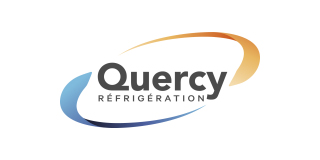
Quercy Réfrigératio
Cooling and CA
Massive CO2 treatments can be a feasible technology to preserve quality of organic table grape cv ?Italia?
The aim of this work was to evaluate the effect of massive CO2 concentrations and time of treatment on the quality attributes of organic table grape and on the control of artificially inoculated Botrytis cinerea during storage at 0 ?C. Grapes were exposed to a continuous flow of air, air + 40% CO2, and air
02 October, 2020
The aim of this work was to evaluate the effect of massive CO2 concentrations and time of treatment on the quality attributes of organic table grape and on the control of artificially inoculated Botrytis cinerea during storage at 0 ?C. Grapes were exposed to a continuous flow of air, air + 40% CO2, and air + 60% CO2 for 24, 48, and 72 hours; fruits were then stored at 0?C for 25 days. Initially, and after 7, 15, and 25 days of storage, respiration rate, weight loss, sensory evaluation scores (including berry and stalk appearance, berry detachment, crunchiness, sweetness, acidity, flavour, and general acceptance), decay incidence, firmness, color parameters, SSC, pH, titratable acidity, acetaldehyde and ethanol content, total phenol content, antioxidant activity, sugar and organic acid contents, were monitored. Additional samples were also inoculated with Botrytis cinerea, and exposed to the same treatments. The perpendicular ?diameters of the lesions for each berry and the incidence of decayed fruits were measured at 7 + 3, 15 + 3 and 25 + 3 days at room temperature. Initial quality of the grapes was poor, and after 15 days of storage treated and untreated samples received a score below 3 (limit of marketability), which did not allow to understand possible physiological injuries due to high-CO2 concentration. Berry treated with 60% CO2 for 48 and 72h received a higher stalk appearance score, but generally the longest exposition induced the occurrence of off - flavour and a lower berry appearance and general acceptance scores by the panellists; moreover berry exposed to 72 h CO2 treatments (all concentrations) also showed a lower resistance to berry detachment, as evaluated sensorially. Berry treated with 60% CO2 for 48 h were evaluated among the best for several sensorial parameters. On the other hand treatment with 40% CO2 for 48h helped to retain berry firmness, which at 25 days sharply decreased in berry treated with 60% CO2, and to control decay incidence and lesion diameter of inoculated fruits. Berries exposed to this condition showed at the end of the storage a 25% of infection, versus the 79% of fruits exposed to 60% for 72h (possibly related to stress due to extreme CO2 conditions) and the 63% of berries exposed to air. In conclusion, the massive CO2 treatments can be a feasible technology to preserve quality of organic table grape, but further study are needed in order to better understand its sensitivity to these conditions. The picture shows a view of the experiments and the graphic summarizes the results; the pdf below allows a better vision. Both kindly sent by Ms. Amodio. ? Original title, full list of authors and source EFFECT OF PRE - TREATMENTS WITH HIGH - CO2 ATMOSPHERES ON PRESERVING QUALITY AND REDUCING DECAY OF TABLE GRAPE CV. ?ITALIA?Piazzolla, F.1, Amodio, M.L.1(*), Blanco D?az, M.T.2 and Colelli, G.1, m.amodio@unifg.it1 Dip.to di Scienze Agrarie, degli Alimenti e dell?Ambiente -Universit? di Foggia, Via Napoli 25, 71122 Foggia, Italy2 IFAPA Centro La Mojonera. Camino de San Nicol?s 1, 04745. La Mojonera, Almer?a - Spain CA MA 2013, XI International Controlled & Modified Atmosphere Research Conference, Trani (Italy), 3-7 June 2013 Palabras clavePoscosecha?? ?postcosecha?? ?postharvest?? ?na-oes?? ??? ??? ???????? ????? ??? ?post-r?colte?? ????? ?? ??????????? ??? ?na-oogst?? ?post-raccolta?? ?Obr?bka po?? ?p?s-colheita?? ????????????????? ?hasat sonras??? ??? ?Ernte?? ????????????????? ????? ????????????? ?postcollita?? ?poskliz?ov頠 ????? ??? ??? ??? ?nakon branja?? ?pozberov頠 ??? ?obdelovanje zemlje po?? ?post-colleita?? ?????? ??????? ?pascapanen?? ??il?onn postharvest?? ??????? ?p?c ra?as?? ?derliaus apdirbimas po?? ?lepas tuai?? ??? ?? ???????? ?post-recoltare?? ??????? ??????? ???????????????????? ?????????????? ?????????????????? ?sau thu ho?ch?? ?????????????????? ?zangemva kwenkathi yokuvunaUva?? ??? ?grape?? ?druiwe?? ?????? ????? ?vinbero?? ?raisin?? ?????????? ???????? ?druif?? ??? ?winogrono?? ??? ??????????? ??z?m?? ???????? ??? ??









